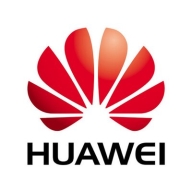

Huawei Wireless and Mojo Networks compete in the wireless networking category. While Huawei is recognized for its affordability and ease of use, Mojo Networks distinguishes itself with superior security features and advanced cloud capabilities, offering a more secure solution for environments needing detailed network insights.
Features: Huawei Wireless is noted for its affordability, stability, and IPv6 support, which appeal to users prioritizing cost-effectiveness and simple setup. Mojo Networks excels in advanced security with its Wireless Intrusion Prevention System (WIPS), extensive cloud capabilities, and advanced analytics, making it ideal for environments requiring high-level security and detailed insights.
Room for Improvement: Huawei Wireless could enhance its SMB market reach by improving technical support and simplifying demo setups. Issues like power injector configurations and clearer training materials have been noted by users. Mojo Networks could benefit from consolidating its multiple management dashboards, improving application and network security features, and refining RF signaling. Additionally, support response times and user interface navigation require attention.
Ease of Deployment and Customer Service: Huawei Wireless offers deployment primarily aligned with on-premises solutions but supports public cloud options as well. Customer service is generally good, albeit with delayed response times in certain regions. Mojo Networks provides deployment versatility across hybrid, public cloud, and on-premises environments. Customer support is satisfactory but needs improvement in response times and efficiency in specific areas.
Pricing and ROI: Huawei Wireless is applauded for its competitive pricing compared to competitors like Cisco and Aruba, offering cost-effective solutions without recurring licensing fees for basic services. Its ROI is justified by its pricing for enterprise functionalities. Meanwhile, Mojo Networks, though more costly, is considered a worthy investment due to its comprehensive feature set and cost-effective long-term licenses. It delivers substantial ROI, especially when compared to premium brands like Cisco and Meraki.
| Product | Market Share (%) |
|---|---|
| Huawei Wireless | 6.3% |
| Mojo Networks | 0.3% |
| Other | 93.4% |


| Company Size | Count |
|---|---|
| Small Business | 17 |
| Midsize Enterprise | 8 |
| Large Enterprise | 12 |
| Company Size | Count |
|---|---|
| Small Business | 15 |
| Large Enterprise | 2 |
We monitor all Wireless LAN reviews to prevent fraudulent reviews and keep review quality high. We do not post reviews by company employees or direct competitors. We validate each review for authenticity via cross-reference with LinkedIn, and personal follow-up with the reviewer when necessary.